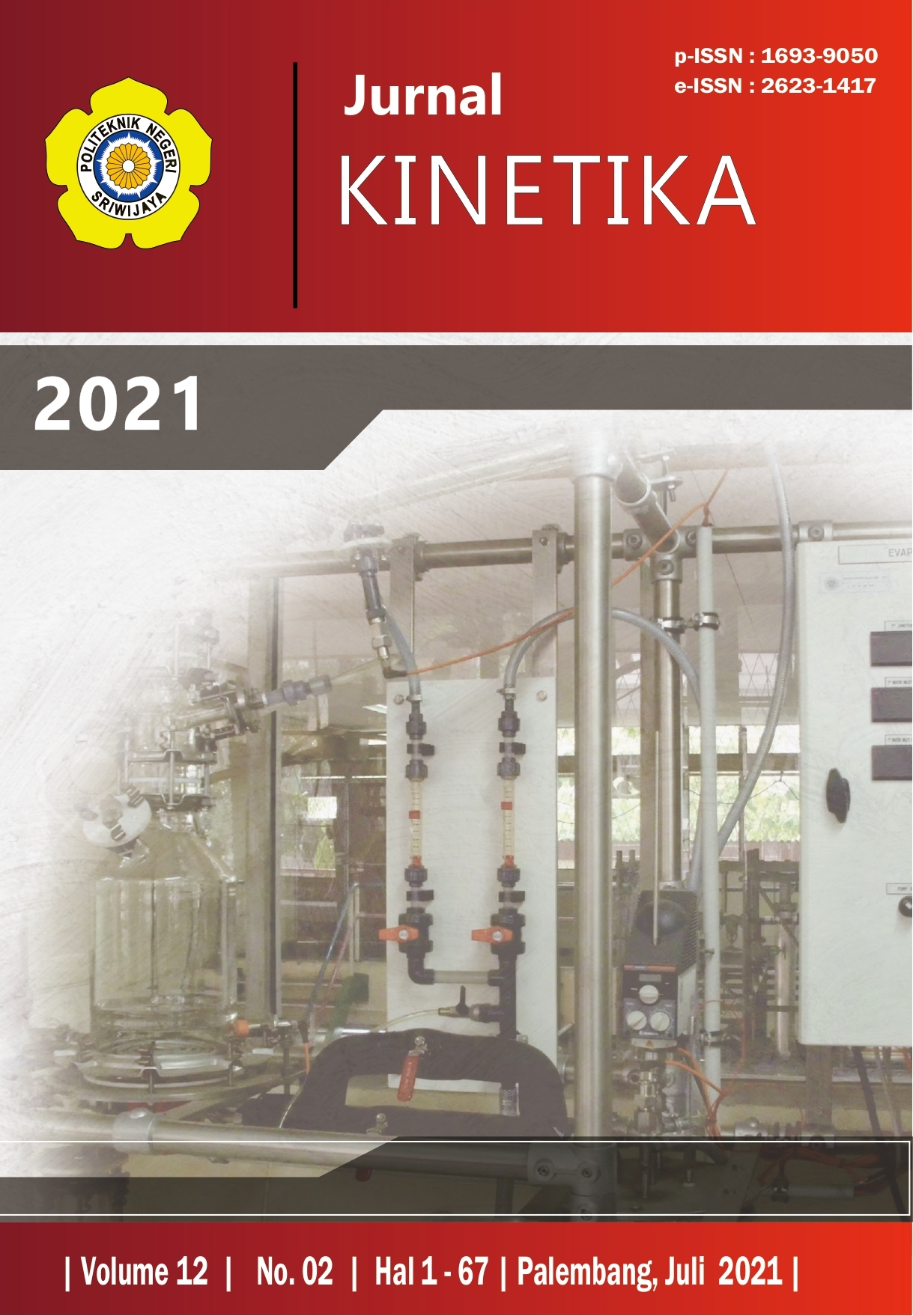KONVERSI LIMBAH PLASTIK LDPE MENJADI BAHAN BAKAR CAIR (BBC) MENGGUNAKAN KATALIS ALUMINIUM OKSIDA DAN
Abstract
According to data from the Kementerian Lingkungan Hidup dan Kehutanan (KLHK), the amount of waste in Indonesia
in 2019 reached 68 million tons, and plastic waste is estimated at 9,52 million tons. Considering that the nature of plastic is difficult to decompose, it is necessary to handle environmentally friendly waste. One of the countermeasures for plastic waste is to convert it into liquid fuel through the pyrolysis process. The pyrolysis of LDPE plastic uses a catalytic cracking method with aluminium oxide and zeolite as catalyst. The independent variable of this study is the pyrolysis temperature variation. The temperature used are 150℃, 200℃, 250℃, 300℃, 350℃, 400℃, 450℃ and 500℃. The highest %yield using aluminium oxide was obtained at 350℃ is 8.34%, while higest %yield using zeolite was obtained at 500℃ is 10.5%.Based on the analysis conducted, it was found that the oil density using aluminium oxide was in the range746.66 kg/m3-815.61 kg/m3, when using zeolite oil density was in the range 0.72 gr/ml-0.758gr/ml. viscosity using aluminium oxide was in the range 2.143 mm2/s-2.730mm2/s and using zeolite was in the range 2.8893 cSt – 3.4589 cSt, flash point ranges from 26℃-32℃, calorific value using aluminium oxide using zeolite was 7587,1678 cal/gr and the results of pyrolysis oil using aluminium oxide and zeolite catalyst the GCMS analysis show that the highest percentage is the C8-C10 chain of 45.13% and 63%..


